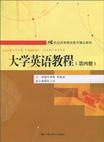大学英语教程(第四册)
出版时间:2010-7 出版社:中国人民大学出版社 作者:何晓勤,廖根福 主编 页数:346
前言
2l世纪,科学技术发展日新月异,发明创造层出不穷,知识更新日趋频繁,全民学习、终身学习已经成为适应经济与社会发展的基本途径。近年来,我国高等教育取得了跨越式的发展,毛入学率由1998年的8%迅速增长到2008年的23.3%,已经进入到大众化的发展阶段,这其中高等继续教育发挥了重要的作用。同时,高等继续教育作为“传统学校教育向终身教育发展的一种新型教育制度”,对实现“形成全民学习、终身学习的学习型社会”、“构建终身教育体系”的宏伟目标,发挥着其他教育形式不可替代的作用。 目前,我国高等继续教育的发展规模已占全国高等教育的一半左右,随着我国产业结构的调整、传统产业部门的改造以及新兴产业部门的建立,各种岗位上数以千万计的劳动者,需要通过边工作边学习来调整自己的知识结构、提高自己的知识水平,以适应现代经济与社会发展的要求。可见,我国高等继续教育的发展,既肩负着重大的历史使命,又面临着难得的发展机遇。 我国的高等继续教育要抓住机遇发展,完成自己的历史使命,从根本上说就是要全面提高教育教学质量,这涉及多方面的工作,但抓好教材建设是提高教学质量的基础和中心环节。众所周知,高等继续教育的培养对象主要是已经走上各种生产或工作岗位的从业人员,这就决定了高等继续教育的目标是培养能适应新世纪社会发展要求的动手能力强、具有创新能力的应用型人才。因此,高等继续教育教材的编写“要本着学用结合的原则,重视从业人员的知识更新,提高广大从业人员的思想文化素质和职业技能”,体现出高等继续教育的针对性、实用性和职业性特色。 为适应我国高等继续教育发展的新形势、培养应用型人才、满足广大学员的学习需要,中国人民大学出版社邀请了国内知名专家、学者对我国高等继续教育的教学改革与教材建设进行专题研讨,成立了教材编审委员会,联合中国人民大学、中国政法大学、东北财经大学、武汉大学、山西财经大学、东北师范大学、江西师范大学、南昌航空大学、华中科技大学、黑龙江大学等30多所高校,共同编撰了“2l世纪高等继续教育精品教材”,计划在两三年内陆续推出百种高等继续教育精品系列教材。教材编审委员会对该系列教材的作者进行了严格的遴选,编写教材的专家、教授都有着丰富的继续教育教学经验和较高的专业学术水平。
内容概要
写队伍全部是来自教学第一线的教学骨干,充分地把各位编者的教学经验融入到教材中,特别是在选编课文时,注重选编短小精悍的短文,让师生在一个教学单位时间内能够完成一个相对完整的内容。 无论是交际技能,还是课文学习,抑或是写作训练,从形式到内容,编者都注重选择最新的语料,并努力使英语学习寓于趣味性、娱乐性之中,以使得课堂教学和课后自学都不会枯燥乏味。 内容特别注重基本知识和基本技能的训练,设计了数量可观的练习;同时,考虑到部分学生入学时需要加强英语基础知识的学习,本教材特别编写了《预备教程》,以供有需要的班级和学生在语音和基础语法方面加强复习和练习。
书籍目录
UNIT 1 PART Ⅰ Communication Skills Expressing Likes and Dislikes PART Ⅱ Text A Beijing Opera PART Ⅲ Text B Chinese Wushu PART Ⅳ Writing Work Paragraph Writing: How to Make a Topic Sentence.UNIT 2 PART Ⅰ Communication Skills Expressing Satisfaction/Dissatisfaction and Complaint PART Ⅱ Text A Taj Mahal to Resume Night Visits PART Ⅲ Text B Spotlight on Copenhagen PART Ⅳ Writing Work Paragraph Writing: How to Develop a Paragraph (Description & Definition)UNIT 3 PART Ⅰ Communication Skills Expressing Sympathy and Comfort PART Ⅱ Text A Studying Abroad PART ⅢText B Oxford University PART Ⅳ Writing Work Paragraph Writing: How to Develop a Paragraph (Exemplification, Listing & Classification)UNIT 4 PART Ⅰ Communication Skills Expressing Fear and Surprise PART Ⅱ Text A Sex Education For Teens PART Ⅲ Text B PART Ⅳ Writing Work Paragraph Writing: How to Develop a Paragraph (Explanation of Causes and Reasons)UNIT 5 PART Ⅰ Communication Skills Expressing Indifference PART Ⅱ Text A The Sculptor Speaks PART Ⅲ Text B Collecting PART Ⅳ Writing Work Paragraph Writing: How to Develop a Paragraph (Comparison and Contrast)UNIT 6 PART Ⅰ Communication Skills Expressing Interest PART Ⅱ Text A Language and Technology PART Ⅲ Text B Capitalizing on New Technologies PART Ⅳ Writing Work Paragraph Writing: How to Develop a Paragraph (Comment and Criticism)UNIT 7 PART Ⅰ Communication Skills Expressing the Possibility of Guessing PART Ⅱ Text A Friday PART Ⅲ Text B Better Than the Movie PART Ⅳ Writing Work Paragraph Writing: How to Develop a Paragraph (Analysis)UNIT 8 PART Ⅰ Communication Skills Expressing Expectations PART Ⅱ Text A Do Animals Think? PART Ⅲ Text B Dogs and Men PART Ⅳ Writing Work Paragraph Writing: How to Develop a Paragraph (Description of Charts or Graphs)UNIT 9 PART Ⅰ Communication Skills Space Description PART Ⅱ Text A Women's Role in Their Marriage PART Ⅲ Text B Good Friends PART Ⅳ Writing Work Paragraph Writing: How to Develop a Paragraph (Viewpoint Demonstration & Refuting a Viewpoint)...UNIT 10 PART Ⅰ Communication Skills Expressing Amount, Size and Measure PART Ⅱ Text A Christmas in Australia PART Ⅲ Text B Santa Claus Around the World PART Ⅳ Writing Work Paragraph Writing: How to Develop a Paragraph (Narration of Methods and Ways)UNIT 11 PART Ⅰ Communication Skills Expressing Methods and Means PART Ⅱ Text A Pioneer in Space PART Ⅲ Text B The Dangers of Space Travel PART Ⅳ Writing Work Paragraph Writing: How to Develop a Paragraph (Narration of Scene & Process)UNIT 12 PART Ⅰ Communication Skills Expressing Calculations and Measurements PART Ⅱ Text A London Olympic 2012 Plan PART Ⅲ Text B Martial Arts PART Ⅳ Writing Work Paragraph Writing: How to Develop a Paragraph (Logical Order)综合练习
章节摘录
Wushu (also known as kung-fu or martial arts) is one of the typical demonstrations of traditional Chinese culture. It is a sport which utilizes both brawn and brain. The theory of Wushu is based upon classical Chinese philosophy, while the skills of Wushu consist of various forms of fighting: fist fights, weapon fights, and other fighting routines (including such offence and defense acts as kicking, hitting, throwing, holding, chopping and thrusting) and unarmed combats. Wushu is not only a sporting exercise but also an artistic form. It is used to cure illness as well as for self-defense and is a comprehensive form of culture of the human body. Wushu enjoys a long history and great popularity in China. Thanks to its uniqueness and charisma originating from traditional Oriental culture, Wushu is captivating the attention of more and more people in other nations. As one of the earliest and long-lasting sports, Wushu has developed its own characteristics over time. Major characteristics are listed below: Because of its long history incorporating differences in culture, ideology, region and usages, Wushu has developed into a great variety of schools and styles. While some schools emphasize the use of fist and hand technique, others emphasize leg technique and footwork. Some take interest in the variation of acts whereas others prefer simplicity. Some focus on keeping opponents at arms and legs length while others like to fight in close contact. The assortment of schools and styles displays the colorful features of Wushu and gratifies the various needs of people. Wushu includes the use of many weapons. Chinese ancients named the Wushu arsenal the "Eighteen Arms", but there are many more in use. Almost all fights are accompanied by weapon usage of one kind or another. The combination of fist fights and weapon usage allows for a fuller and more efficient application of Wushu skills while sharpening the insight of combat and control and enriching the program of Wushu exercise.
图书封面
评论、评分、阅读与下载
